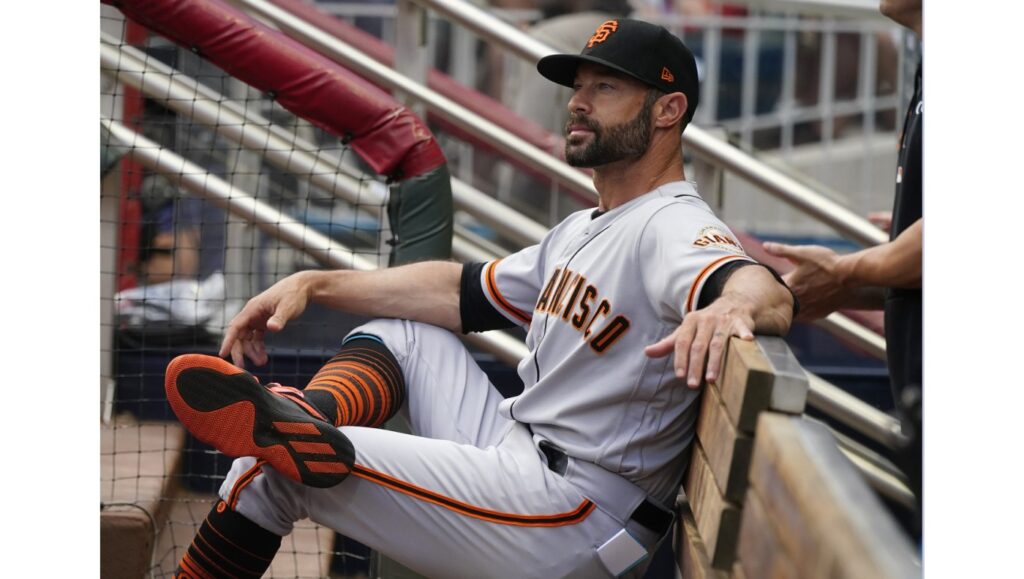
It went down as a meaningless play in the box score, a bunt single by Mauricio Dubon in the sixth inning of the San Francisco Giants’ 13-2 victory over the San Diego Padres on April 12. Dubon never advanced past first base; Padres pitcher Dinelson Lamet struck out the next three batters in order.
In the wake of Dubon’s bunt, however, the aggrieved faces in the Padres’ dugout conveyed plenty of meaning. With the Giants leading by six runs, bunting for a hit was a no-no. It crossed a line. It violated an unwritten rule.
Last Friday, San Francisco led Washington by six runs in the ninth inning when Thairo Estrada attempted to steal second base. This will go down as another meaningless play. Estrada was thrown out trying to score on a Brandon Crawford single. Yet clearly it meant something. The Nationals’ veteran shortstop, Alcides Escobar, yelled in the direction of the Giants’ dugout as the inning ended – another line crossed, another unwritten rule broken.
Every season, baseball’s unwritten rules are revisited by fans and broadcasters and social media pundits. Every season, these rules seem shifty and vague. From the outside, the rules seem to bear less and less meaning every year. Two things never change, though: some unwritten rules always remain, and they always remain unwritten.
That’s because, inside the game, the rules serve a hidden purpose. We often see overly aggressive tactics motivate the players on the receiving end when their anger boils over. The Giants’ repeated infractions invite a different question: can breaking an unwritten rule motivate one’s own teammates?
I put that question to Adam Law, a mental skills coach for the Dodgers. After seven minor league seasons in the Dodgers’ and Seattle Mariners’ organizations, Law retired as a player and obtained his M.A. in performance psychology. He’s uniquely qualified to know what motivates baseball players.
The answer, in a word, is anything.
“From a theoretical standpoint, there’s something called reversal theory: how you interpret a situation impacts how you respond to it,” Law said. “If I’m a pitcher and a hitter drag bunts on me and we’re losing by 10, that’s what the situation is, reversal theory says you can use that as a way to pump you up or you can roll over and die from it. You can use it as motivation.
“The other dugout chirping at their guys, the umpire rubs you the wrong way – you can look at any situation and use it to fire yourself up. You can interpret your feelings that way as well. Guys who are more externally motivated, those dudes are looking for anything to give them a push.”
Law said the same principle applies to a teammate breaking an unwritten rule by playing aggressively in a game that isn’t close. To an established veteran, seeing a younger player competing as if each at-bat is his last might serve as positive motivation. (It’s worth noting here that neither Dubon, 27, nor Estrada, 26, has established himself as an everyday player in a 162-game season.)
This also helps explain why unwritten rules remain unwritten: They can vary from player to player and team to team. What motivates one player might go unnoticed by another.
How long is a hitter allowed to watch a fly ball as it sails over a fence? Ask Arizona Diamondbacks pitcher Madison Bumgarner and the answer might be different from any of his peers. How soon before a game should a starting pitcher be allowed to jog onto the field from the bullpen? Five years ago, Tyler Anderson (who was pitching for the Colorado Rockies then) irked current teammate Clayton Kershaw by taking his time jogging into the visitors’ dugout at Dodger Stadium. Perhaps they have reached consensus on this question.
“I don’t know (Tampa Bay Rays pitcher) Corey Kluber,” Law said, “but watch him and he’s like a robot. Fly out to right field, jog across the mound, and he’s not going to say anything about it. Get a guy who isn’t as calm under pressure, a little more flamboyant on the mound, and you can do things that fire him up and get him out of his game.”
For players, then, a code of unwritten rules is always accessible if you want it. And if some players will always want it, some semblance of a code will never go away – no matter how new-school your manager (or your opponent’s manager) professes to be. The thirst for motivation is simply too powerful.
Related Articles
Dodgers’ Trea Turner delivering RBIs in new spot in lineup
Chicago White Sox snap an 8-game losing streak on Andrew Vaughn’s 3-run homer: ‘Definitely something to build off’
Chicago Cubs injury report: Wade Miley moves closer to a rehab assignment, but Adbert Alzolay isn’t throwing yet
Giancarlo Stanton hits 350th-career home run
Pete Alonso clears concussion protocol; Buck Showalter talks to MLB about numbers of players hit by pitches
Just don’t mistake unwritten rules for the kind that would ever be written down. Too often, this is the case when managers are pressed on the topic. Gabe Kapler, the Giants’ proudly progressive manager, illustrated the point perfectly when he addressed reporters after the game against the Nationals.
“What’s the threshold? One team thinks it’s eight runs in the sixth inning,” Kapler said. “Another team thinks just keep going after it as long as you’re early in the game. But there’s no real cutoff point. That’s a tough place to be. I don’t think that there should be any of that, personally, clearly, but at the same time I understand that we all have different opinions and vantage points and it’s OK.”
Angels skipper Joe Maddon, who has managed in parts of 19 major league seasons, agreed.
“I’m not into unwritten rules anyways,” Maddon said Wednesday. “If somebody’s kicking our (butt) and continues to do things, it’s our fault. It’s not their fault.”
